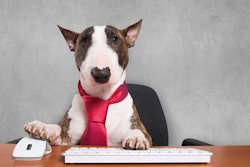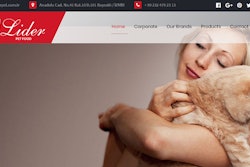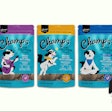
Scientists compared the palatability of dog kibble made with the seaweed Ascophyllum nodosum to a diet without the algal ingredient. While high levels of seaweed inclusion reduced dogs’ preference for the kibble, the researchers offered advice for maintaining palatability while using seaweed-based pet food ingredients. The Journal of Applied Phycology published the study results.
“We concluded that if the pet food has a high palatability per se (i.e., high moisture content, high protein content, use of fresh meat, etc.) and Ascophyllum nodosum is included at a low level (e.g. 0.5%), it might be not necessary to have recourse to any technological processes (e.g. microencapsulation, spray-coating) to assure the product acceptability and palatability,” study co-author Massimo Trabalza-Marinucci, PhD, of the University of Perugia, Italy’s department of veterinary medicine, told Petfood Industry in an email.
Palatability study on seaweed in dog food
In their experiment, Trabalza-Marinucci’s team worked with 11 dogs that had not previously eaten seaweed-based pet food ingredients. The researchers used the split-plate test to evaluate the dogs’ preferences. The dogs evaluated three diets. One contained no seaweed as a control. A second kibble contained 0.3% A. nodosum seaweed, as a low concentration. The third dog food contained 1.0% of the seaweed, a high concentration.
“To our knowledge, A. nodosum is generally included in pet foods at a level of approximately 0.5% on as is basis,” Trabalza-Marinucci said. “However, we have found out one European pet food manufacturer that is currently using A. nodosum at higher inclusion levels (approximately 4% on as is basis) for some of its products. Unfortunately, we do not have any feedback regarding the acceptability of these pet foods.”
Seaweed inclusion did not seem to discourage dogs from trying the kibble, though, since no differences were found in first choice behavior during the split-plate trials. However, for the 1% seaweed kibble, dogs ate more of the control. The dogs didn’t show any differences in consumption of the 0.3% seaweed dog food compared to the control. The researchers concluded that the negative palatability effect of 1% seaweed inclusion may be based on taste rather than smell.
“Although we reported that the A. nodosum inhibiting effect on food consumption is clearly observable only when the dog has to make a choice between two diets with marked organoleptic differences, it is advisable to take into account that the inclusion of A. nodosum is likely to have an impact on food palatability,” Trabalza-Marinucci said.

















